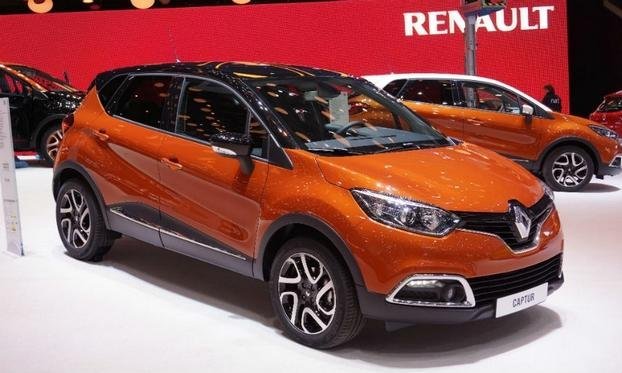PSA, Renault Woo Younger Drivers with New Small SUVs

Peugeot says the first reaction to its 2008 has been positive. The 2008 won praise from dealers, said Jean-Philippe Imparato, PSA's director of European commercial operations. "I have trust in the first reaction," he said. "When guys say 'Wow, it's gonna work,' you're likely to sell them to the final customer."
PSA and Renault say the new models will help them woo younger drivers -- and gain a foothold in a segment that has grown 45 percent since 2007 and that analysts expect to more than double by 2016.
The Captur extends Renault's design renewal that started with the new Clio subcompact. The 2008 is based on its 208 compact. Both cars were unveiled at the Geneva auto show last week are slated to hit European showrooms next month.
Convincing customers
Peugeot says the 2008 will start around 15,000 euros, versus 12,000 euros for the 208. By 2015, the company expects to sell 200,000 of the new model, half in Europe and half in developing countries. Renault said the Captur's price would be "competitive" with the 2008 but declined to provide a sales target.
"It's easier to find a niche in a segment that is growing," Frederic Saint-Geours, PSA's brands chief, told reporters when the 2008 was unveiled. "And it's easier to convince the client to try a brand new product than to lure him with discounts on existing models."
The 2008 features technology that helps drivers squeeze into tight parking spaces, Peugeot's latest traction system, called Grip Control, and 17-inch alloy wheels. The car, manufactured in Mulhouse, France, consumes 3.8 liters of gasoline per 100 kilometers (61.8 miles per gallon).
The Captur offers customers two-tone paint, a selection of wheel colors, and six interior colors. Produced in the Spanish city of Valladolid, the car has two gasoline and two diesel options, with consumption starting at 3.7 liters per 100 km.
Brand 'crossoverization'
"The crossoverisation of our range is a long-term trend," said Jerome Stoll, Renault's head of sales. "I'm convinced that the Captur will attract a much younger customer base."
The French will be joining a crowded market with the SUV push. Opel says it has received almost 90,000 orders since the Mokka, went on sale last year. "These 90,000 orders speak for themselves, and it's not the end yet," said Opel CEO Karl-Thomas Neumann. "I'm convinced with Mokka we hit exactly the right spot in the market."
Fiat's turnaround plan in Europe calls for 16 upscale cars, including an Alfa Romeo SUV. Next year the company will produce a small Jeep and the 500X, an SUV variant of its 500 subcompact, at a plant in southern Italy.
Audi plans to double its lineup of SUVs by 2020 and is developing the Q2, Q4 and Q6 as a sportier alternative to its current range of three SUVs, according to a person familiar with the strategy.
Nissan Motor Co. has three models, including the Juke, which accounted for 40 percent of sales in the subcompact SUV/crossover segment, according to IHS. "We have the momentum," said Paul Willcox, senior vice president of sales and marketing for Nissan in Europe. "If more brands join Nissan in building crossovers, that could be good for Nissan."
IHS Automotive expects Europeans to buy 478,159 smal SUV/crossovers this year and forecasts the segment will exceed 800,000 units in the region by 2016.
The French automakers need the profit boost from SUVs, which typically offer higher margins than sedans. With its factories running at about 75 percent of capacity, PSA reported a 576 million-euro ($748 million) operating loss last year. At Renault, which says its French factories ran at 55 percent of capacity last year, sales have suffered from the economic downturn, especially in Spain and Italy.
The French SUV push is "better late than never," said Florent Couvreur, an analyst CM-CIC Securities. "They should have made them more than five years ago."
Nouvelles connexes


